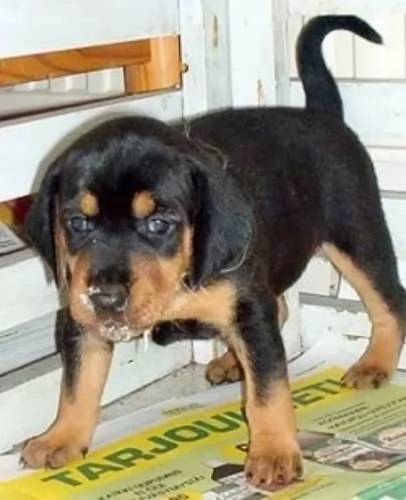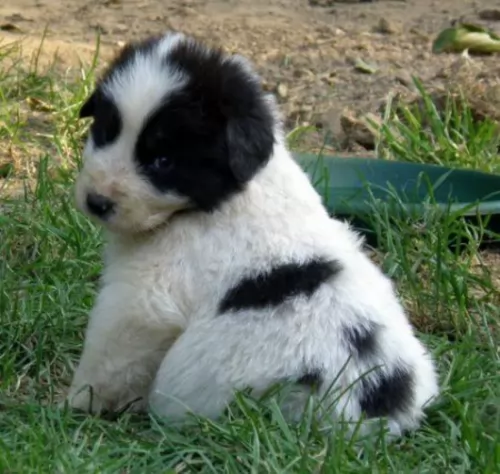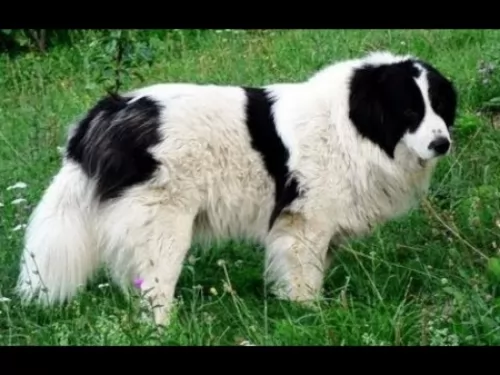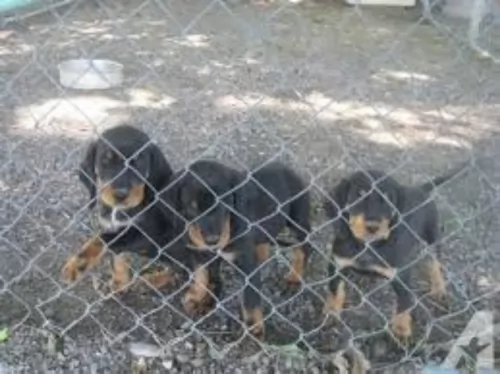 Petzlover
Petzlover Hellenic Hound is originated from Greece but Tornjak is originated from Croatia. Hellenic Hound may grow 17 cm / 6 inches shorter than Tornjak. Hellenic Hound may weigh 30 kg / 66 pounds lesser than Tornjak. Both Hellenic Hound and Tornjak has same life span. Both Hellenic Hound and Tornjak has almost same litter size. Hellenic Hound requires Low Maintenance. But Tornjak requires Moderate Maintenance
Hellenic Hound is originated from Greece but Tornjak is originated from Croatia. Hellenic Hound may grow 17 cm / 6 inches shorter than Tornjak. Hellenic Hound may weigh 30 kg / 66 pounds lesser than Tornjak. Both Hellenic Hound and Tornjak has same life span. Both Hellenic Hound and Tornjak has almost same litter size. Hellenic Hound requires Low Maintenance. But Tornjak requires Moderate Maintenance
 Developed in Southern Greece, the Hellenic Hound was bred to hunt hare and is an ancient breed. It is a medium sized breed with strong scent and tracking skills. It is believed to have been in existence for thousands of years. The ancestry of the breed included the Lagonikoi or laconikoi, native to southern Greece in ancient times. The breed was spread by sailors on Greece trading ships and colonization.
Developed in Southern Greece, the Hellenic Hound was bred to hunt hare and is an ancient breed. It is a medium sized breed with strong scent and tracking skills. It is believed to have been in existence for thousands of years. The ancestry of the breed included the Lagonikoi or laconikoi, native to southern Greece in ancient times. The breed was spread by sailors on Greece trading ships and colonization.
Todays Hellenic Hound is found throughout Europe. Kept somewhat isolated by the mountains, the breed was protected from outside breeding and they remained pure for centuries. It is a fearless, smart and hyped up purebred. The Hellenic Hound needs to have a job and if you don’t give him one, he will find one. He is smart and independent which sometimes makes him stubborn. It also takes this dog longer to mature than others, sometime between two and three years. It is not good for first time owners. Today’s hound is still a popular hunting dog and companion animal as well. They are rarely seen outside of the Greek country.
In 1996 the Hellenic Hound was recognized as the first Greek dog breed into the FCI. They are not recognized by the AKC. Its numbers continue to decline.
 Known also as the Bosnian and Herzegovinian, the Tornjak dog hails from Croatia and Bosnia and is a large mountain sheepdog.
Known also as the Bosnian and Herzegovinian, the Tornjak dog hails from Croatia and Bosnia and is a large mountain sheepdog.
It is thought that this protector of livestock dog has been bred from the Tibetan Mastiff. He is an ancient breed because there are records of its existence coming as far back as the 11th century.
As a working dog, his role of guarding sheep became less and the dog’s numbers diminished. It was during the 1970s that the breed was revived.
 Today’s Hellenic Hound is not a big dog but rather very average or medium. It is an athletic dog and looks like it. It has a balanced body with a deep chest and thick neck. It has medium height legs that are strong and muscular with paws that are prepared for the terrain it always works on. Its coat is short and tight. The colors of the Hellenic Hound are black with tan or white on the chest. Their heads are noble and rounded with a rectangle shaped muzzle. They have v shaped, long ears and round eyes. Their toe nails are black and so is their nose. It has excellent scent glands, very quick responses, speed and stamina. Their tail is thick and tapers off.
Today’s Hellenic Hound is not a big dog but rather very average or medium. It is an athletic dog and looks like it. It has a balanced body with a deep chest and thick neck. It has medium height legs that are strong and muscular with paws that are prepared for the terrain it always works on. Its coat is short and tight. The colors of the Hellenic Hound are black with tan or white on the chest. Their heads are noble and rounded with a rectangle shaped muzzle. They have v shaped, long ears and round eyes. Their toe nails are black and so is their nose. It has excellent scent glands, very quick responses, speed and stamina. Their tail is thick and tapers off.
 This is a large, strong dog, standing at between 58 and 72cm in height and weighing between 28 and 50kg. He has a long, thick coat which has always protected him from the harsh winters of the countries he comes from.
This is a large, strong dog, standing at between 58 and 72cm in height and weighing between 28 and 50kg. He has a long, thick coat which has always protected him from the harsh winters of the countries he comes from.
Common colors for the coat are mainly white with tan, brown, grey or black markings.
The Tornjak is a beautiful dog and also calm by nature, well balanced, intelligent and self- confident. His calm nature doesn’t stop him from being a good watchdog though as he is also alert and brave.
He is more than willing to please his owner and is able to be trained and socialized with ease.
He is a social dog and just loves spending time with hs human family. Therefore efforts should be made not to leave him alone for long periods of time. He forms strong bonds with them and is loving and devoted. Because of his size and energy he won’t suit life in the city on a small property but will be better suited to life in the countryside.
 yes, they are very fond of children as long as they are carefully socialized.
yes, they are very fond of children as long as they are carefully socialized.
Great hunter, stamina ,scent, voice
He needs to have a yard or land. He doesn’t do well in apartments.
The breed is very intelligent and can be very trainable. However, they can also be stubborn and that makes training harder.
 With their human family, they become attached and loyal, not wanting to be separated from anyone for too long. Give him the care this beautiful dog deserves and he'll make you a splendid pet and companion.
With their human family, they become attached and loyal, not wanting to be separated from anyone for too long. Give him the care this beautiful dog deserves and he'll make you a splendid pet and companion.
 The Hellenic Hound is a fairly healthy breed having been isolated on the Island of Greece for the most part. They are susceptible to:
The Hellenic Hound is a fairly healthy breed having been isolated on the Island of Greece for the most part. They are susceptible to:
Could be hips, elbows or knees. If untreated can lead to lameness or inability to walk.
Causes joint pain and can cause lameness or inability to walk.
Can be fatal if not treated immediately. To avoid it don’t feed a large meal before or after exercise.
Can be a variety of things that occur during the hunt.
Need to keep the ears clean and dry in order to avoid infections.
 Most dogs face one or two health challenges in their lives, but most Tornjaks are healthy and won’t easily get sick.
Most dogs face one or two health challenges in their lives, but most Tornjaks are healthy and won’t easily get sick.
They’re large dogs so they typically don’t live as long as small dogs. They can live to be between 10 and 12 years of age.
This is a dislocation of the kneecap, caused by an injury or it can be present at birth. It can cause pain and a limp.
This is a joint condition that is more often seen in large dogs. The ill-fitting joint rubs and chafes, and osteoarthritis and more pain is the result.
You will have to speak to your vet about relieving the pain for your dog and making him more comfortable. Don’t think hip dysplasia is something only old dogs get – it can develop with young dogs – even puppies. Your veterinarian will examine your pet and suggest different medical and surgical options.
 Feed the puppy 2-3 times a day a total of 2 cups
Feed the puppy 2-3 times a day a total of 2 cups
Feed the adult twice a day a total of 2-3 cups
The Hellenic Hound has excellent stamina, speed and scenting ability.
This is a very active, athletic dog that needs to work and needs exercise. He is powerful, quick and has great endurance. It thrives on hunting but will need other activities on the days it doesn’t hunt. It needs a yard or land to play in. Agility, Field Trials, tracking, hunting and fly ball are all activities the Hellenic Hound will enjoy.
 The Tornjak needs exercise every day to keep him fit and happy. He will love it when you take down his leash for his daily walk. He is a social dog and will want to be involved with all your activities. He gets on well with other dogs too.
The Tornjak needs exercise every day to keep him fit and happy. He will love it when you take down his leash for his daily walk. He is a social dog and will want to be involved with all your activities. He gets on well with other dogs too.
The Tornjak will require quite a bit of grooming because the hair is fairly long and it sheds. Some dog owners have the hair cut by a professional groomer. Regular brushing certainly helps to reduce lots of dog hair flying around.
The insides of his ears need to be checked for signs of redness as well as the eyes. The eyes should be checked for pus and redness. Occasional dog nail trimming will also be required.
Provide your Tornjak with top quality food. If you feed him with one of the commercially manufactured foods, make sure it is one of the better brands. The inferior brands are filled with bad ingredients that can actually make a dog sick.
Try to include some home-made food which can be added to the dry kibble twice a week as a treat. Avoid human foods such as chocolates, grapes, onions, peanuts and chips as these can give him stomach pain and more vet bills for you.
Stick to wholesome, simple foods such as boiled chicken, brown rice or pasta and spinach, sweet potatoes and carrots. Your Tornjak will love it and it will ensure he has bright eyes ad a wagging tail. Never leave him without a constant supply of fresh, cool water.